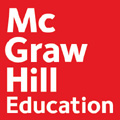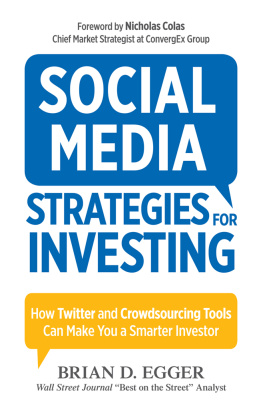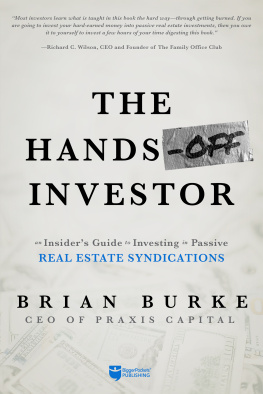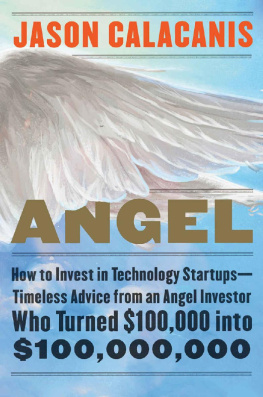

Copyright 2013 by Brian Cohen and John Kador. All rights reserved. Except as permitted under the United States Copyright Act of 1976, no part of this publication may be reproduced or distributed in any form or by any means, or stored in a database or retrieval system, without the prior written permission of the publisher.
ISBN: 978-0-07-180072-3
MHID: 0-07-180072-7
The material in this eBook also appears in the print version of this title: ISBN: 978-0-07-180071-6, MHID: 0-07-180071-9.
All trademarks are trademarks of their respective owners. Rather than put a trademark symbol after every occurrence of a trademarked name, we use names in an editorial fashion only, and to the benefit of the trademark owner, with no intention of infringement of the trademark. Where such designations appear in this book, they have been printed with initial caps.
McGraw-Hill Education eBooks are available at special quantity discounts to use as premiums and sales promotions, or for use in corporate training programs. To contact a representative please e-mail us at bulksales@mcgraw-hill.com.
TERMS OF USE
This is a copyrighted work and McGraw-Hill Education and its licensors reserve all rights in and to the work. Use of this work is subject to these terms. Except as permitted under the Copyright Act of 1976 and the right to store and retrieve one copy of the work, you may not decompile, disassemble, reverse engineer, reproduce, modify, create derivative works based upon, transmit, distribute, disseminate, sell, publish or sublicense the work or any part of it without McGraw-Hill Educations prior consent. You may use the work for your own noncommercial and personal use; any other use of the work is strictly prohibited. Your right to use the work may be terminated if you fail to comply with these terms.
THE WORK IS PROVIDED AS IS. McGRAW-HILL EDUCATION AND ITS LICENSORS MAKE NO GUARANTEES OR WARRANTIES AS TO THE ACCURACY, ADEQUACY OR COMPLETENESS OF OR RESULTS TO BE OBTAINED FROM USING THE WORK, INCLUDING ANY INFORMATION THAT CAN BE ACCESSED THROUGH THE WORK VIA HYPERLINK OR OTHERWISE, AND EXPRESSLY DISCLAIM ANY WARRANTY, EXPRESS OR IMPLIED, INCLUDING BUT NOT LIMITED TO IMPLIED WARRANTIES OF MERCHANTABILITY OR FITNESS FOR A PARTICULAR PURPOSE. McGraw-Hill Education and its licensors do not warrant or guarantee that the functions contained in the work will meet your requirements or that its operation will be uninterrupted or error free. Neither McGraw-Hill Education nor its licensors shall be liable to you or anyone else for any inaccuracy, error or omission, regardless of cause, in the work or for any damages resulting therefrom. McGraw-Hill Education has no responsibility for the content of any information accessed through the work. Under no circumstances shall McGraw-Hill Education and/or its licensors be liable for any indirect, incidental, special, punitive, consequential or similar damages that result from the use of or inability to use the work, even if any of them has been advised of the possibility of such damages. This limitation of liability shall apply to any claim or cause whatsoever whether such claim or cause arises in contract, tort or otherwise.
To my amazingly supportive family
and the New York startup community,
which nurtured my entrepreneur dreams
and now allows me to nurture those of others
Brian Cohen
To my son, Dan, who lives what
his father merely describes
John Kador
CONTENTS
FOREWORD
I first met Brian Cohen in a noisy auditorium at a business school competition at New York University. There were scores of investors and entrepreneurs, all trying to get their voices heard. It was hard not to be taken aback by Brians desire to talk with every person in the room. What stood out to me was the fact that he treated everyone more like a long-lost relative rather than a potential investment or stepping stones on a path toward personal financial gainhe treated us like humans.
Starting a company is a journey into the unknown, especially for first-time entrepreneurs. In May 2008, I started this journey by leaving a job at Google to build a mobile app with my friend Paul Sciarra.
That initial app was called Tote, a collection of catalogs that you could browse on your phone. Tote had a few decent features, but none stood out as being great. We soon learned that in order to succeed, we needed to excel at one thing. Nearly two years later, in March 2010, Paul and I launched Pinterest along with our friend Evan Sharp. We focused on one core feature: the ability to collect in one place images that users found inspiring.
Four months later, we had only a few thousand people on the site compared to the millions that other successful consumer startups now see within weeks. Nevertheless, with Brians guidance, we kept moving forward.
When Pinterest finally started growing, we realized that, for our first users, Pinterest was an extremely personal tool. People spend time on Pinterest planning the most important things in their lives, such as a wedding, the addition of new family members, or what furniture they will put in their homes. As we grew our team, we wanted to make sure we worked with people who understood what Pinterest meant to us and to our first users.
When the time came for Pinterest to raise money, we knew we wanted to find not just a financial backer but an angel investor who would also be able to help us navigate the journey on which we would embark. Advice from others indicated that the best angel investors are those who provide not just money but guidance, contacts, and wisdomall backed by personal experience.
Brian is ever optimistic and has shown me the value of being a positive leader. At a time early in Pinterests journey, he believed in what this very personal project of ours could be. He understood what Pinterest meant to our small team and what it could mean to millions of people. This book is full of advice on how to work with angel investors like Brian, but its important to note that not every business deal will follow the same rubric. Every entrepreneurs journey is different, making it especially important to surround yourself with people who truly care for your cause.
Ben Silbermann
Cofounder and CEO
Pinterest
Palo Alto, CA
Introduction
THE CLOSEST THING TO SLAVERY
My path to angel investing began with a piece of unsolicited advice from my favorite professor while I was in graduate school at Boston University. Harold G. Buchbinder, or Bucky, as he invited his students to call him, created the science communications program at Boston University.
I was just a kid from Brooklyn. Im still not entirely sure why Bucky took an interest in me. I know he was intrigued by my organizing a dance marathon to raise money for muscular dystrophy and by how I was getting the universitys administration to support it. I certainly didnt know the meaning of the word mentoring. But one day, Bucky asked me to stop by his office after class. I think I need to share with you something that will make you more successful, Bucky said.
I was certainly intrigued. No one had ever spoken to me like that.
When I sat down in his office, he gazed at me intently and said, Never, ever work for anybody. Its the closest thing to slavery.
I didnt understand what he was talking about. Everyone I knew in Brooklyn worked for someone else. I didnt even realize he was mentoring me. But his words must have settled somewhere deep within me, because when I graduated, all I wanted to do was start a company. Most of my friends went to work for media companies or educational institutions, and many of them have done very well. But for me, my path led to the very special version of freedom that entrepreneurialism makes possible. I thank Bucky every day.
Next page










